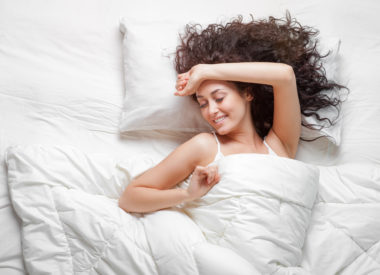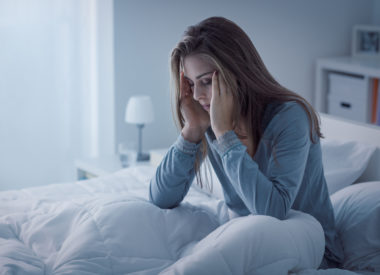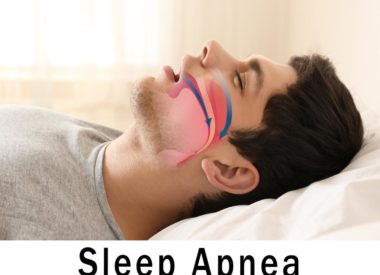What Is Sleep Paralysis? (Signs, Symptoms, and Causes)
William Shakespeare refers to it as an old hag in his play Romeo and Juliet. Dutch physician Isbrand Van Diemerbroeck in the mid1600s documented a patient who believed the Devil or a large dog appeared to crush the breath from her. The Greek physician Galen wrote of it nearly two millennia ago, and a nearly 2500-year-old Chinese book about dreaming mentions it. In more modern times, variants include tales of evil magic, witchcraft, and alien abductions.
It, in this case, refers to the sleep disorder known as Sleep Paralysis.
What is sleep paralysis?
Sleep paralysis is a minor sleep disorder that occurs either just before you fall asleep or right after you have woken up. You are awake and aware, but find yourself paralyzed, unable to move or to speak.
The physical paralysis is often accompanied by phantom physical sights, sounds, and tactile physical sensations. (Interestingly, the other senses of smell and taste are not often mentioned in sleep paralysis research.) People have reported, in addition to feeling as if someone (or some thing ) is sitting on their chest, to hearing voices or noises; feeling as if they are floating, levitating, or having an out of body experience; and even seeing people, animals, or other objects, often believing them to be malevolent.
The emotional impact of Sleep Paralysis can be profound. In addition to the very normal anxiety caused by being awake but unable to move, a sleep paralysis episode may also include hallucinations, such as believing an evil or menacing presence to be in the room, or seeing inanimate objects move, distort, or behave in bizarre and unexpected ways. Some have described it in extremely dramatic terms, such as feeling as if I had woken up dead, or I thought my spinal cord was cut and I was now quadriplegic.
Fortunately, sleep paralysis tends to last for only short periods of time, often ending after just seconds. However, it may stretch over several minutes and to the paralyzed sleeper, it may subjectively feel as if it will never end.
What causes sleep paralysis?
Sleep Paralysis is a well-known and fairly common minor sleep disorder. As many as 40% of all people are estimated to have had a sleep paralysis event. Although it has often been described as a frightening and disorienting experience, it is generally not an indicator of any more serious physical or mental condition.
There are two forms of sleep paralysis:
- Hypnagogic (predormital) : Just before falling asleep
- Hypnopompic (postdormital) : Right after waking up
Normally, as you fall asleep, your body relaxes further and further until your conscious mind shuts off. Once that happens, your body enters into the regular 90-minute, four-stage sleep cycle, ending with about 25 minutes of deep, rapid eye movement (REM) sleep.
During this most refreshing of sleep periods, the body temporarily disconnects your muscles, preventing you from moving or acting out your dreams an excellent evolutionary adaptation to prevent you from harming yourself in your sleep. This state of muscle relaxation is known as atonia .
Sleep paralysis occurs when your conscious mind wakes up while your body is in a state of atonia. You will be aware of being awake, yet be unable to move a muscle.
Who is likely to experience sleep paralysis?
This condition is most often first noticed during the teenage years, but people of every age have reported experiencing sleep paralysis. It generally does not occur in people who are sleeping normally.
Several factors have been identified to increase the incidence of sleep paralysis, including the following:
- Sleep deprivation, caused by insomnia, work schedule changes, major lifestyle changes (e.g. a newborn baby, new sleeping partner), etc.
- Inconsistent sleep schedule, including changing bedtimes or erratic waking times
- Stress or other anxiety-inducing conditions
- Sleep position: more than 50% of sleep paralysis occurrences are in people sleeping on their backs
- Sleep disorders, including obstructive sleep apnea (OSA), narcolepsy or nighttime leg cramp
- Use of certain medications, particularly sleep aids and over the counter (OTC) medications with psychoactive properties, such as antihistamines
- Substance abuse
How can sleep paralysis be treated?
For most people, sleep paralysis is an isolated event: it happens rarely and for short durations. But considering the emotional shock that a sleep paralysis hallucination may have, such as the classic demon on my chest, it may help some people to consider the following approaches to addressing the issue:
- Ensure that you get 68 hours of sleep a night, every night
- Experiment with different sleeping positions
- Dampen or eliminate sources of emotional and mental stress
- Keep a sleep diary, listing symptoms, occurrences, etc. for 34 weeks
- Talk to family members about any history of sleep disorders
- Consult with a sleep specialist
- Use sleep aids, such as antidepressant medication, that will regulate your sleep cycles
A polysomnogram, or overnight sleep study, is a good option for investigating potential causes of sleep paralysis. People suffering from obstructive sleep apnea, narcolepsy, and other sleep disorders are substantially more likely to encounter sleep paralysis.



